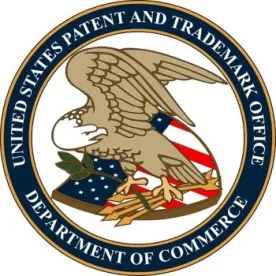As part of its ongoing efforts to improve patent quality, the USPTO is reevaluating its examination time goals and seeking public feedback on how much time examiners should have to examine a patent application. Examination time goals already vary by technology and the examiner’s level of experience, but should the USPTO refine the goals to consider other factors?
Current USPTO Examination Time Goals
I find it frustrating when the USPTO solicits public comment on internal USPTO practices without explaining what goes on behind the scenes, but the October 25, 2016 Federal Register Notice refers to “background materials” that include these slides that reveal the formula used to determine the examination time allocated to a given examiner to examine a given patent application.
According to the slides, each application is assigned a base hours value based on the complexity of the technology:

Then, the hours are adjusted based on the examiner’s seniority, with more junior examiners given more time:

The slides include this example of examination time goals different examiners would have for a relatively simple application:

According to the slides, the time goals encompass all examination activities for a given application from the initial review through “disposal” (allowance, appeal, abandonment).

Reevaluating USPTO Examination Time Goals
According to the October 25, 2016 Federal Register Notice, the USPTO is reevaluating the current examination time goals in view of “significant changes to the examination process,” including “increased use of electronic tools, changes in law due to court decisions, a growing volume of prior art, and progress in technology, which results in increasingly complex subject matter in applications,” as well as the impact of the change to the Cooperative Patent Classification (CPC) system and the USPTO’s Enhanced Patent Quality Initiatives. For example, the USPTO is considering “the relationship between examination time and value-added examination activities, such as best practices for enhancing the clarity of the record with respect to claim interpretation, interview summaries, and reasons for allowance.”
Questions For Stakeholders
Against this backdrop, the USPTO poses the following questions to stakeholders:
-
Do you perceive a difference in the quality of examination performed in complex technologies compared to less complex technologies? If yes, which do you perceive as higher quality and why? In what aspect(s) is the quality of examination higher?
-
What factors do you consider when estimating the amount of time needed to take various steps in prosecution, such as preparing responses to Office actions or preparing for interviews? In particular, if you prosecute applications in a variety of technology areas, how do those factors vary among the technologies
-
Are the applications you prosecute more or less complex than in the past, e.g.,10 years ago? What factors contribute to the increase or decrease in complexity? Do you believe the increase or decrease in complexity has affected the amount of time it takes to prosecute the applications? If so, by how much? Do you believe the increase or decrease in complexity has affected the quality of examination? If so, how?
-
In order to increase the quality of examination, do you believe that an increase in the time allotted for examination should be designated for specific activities, such as interviews, or left to the discretion of the examiner? What activities would you prioritize and allocate more time to?
-
Are there any portions of Office actions which you feel do not add value or quality to the examination? If yes, what are they?
-
What other activities beyond examining, such as research or training, could examiners spend time on that would add value? Why do you believe these activities could add value?
-
While the focus of this request for comments and the roundtables is to find the appropriate amount of time for examination, cost and pendency are also contributing factors. Do these factors raise a concern that should be considered?
The USPTO asks for written comments by December 27, 2016, preferably by email to ExternalExaminationTimeStudy@USPTO.gov.
Examination Time Roundtables
The USPTO will be hosting five roundtables on this topic at its headquarters in Alexandria, Virginia on November 14), at its Dallas, Texas regional office on November 29, at its Detroit, Michigan regional office on December 15, at its Denver, Colorado regional office on December 15, and at its San Jose regional office on January 11. More information and registration details can be found here.




 />i
/>i

